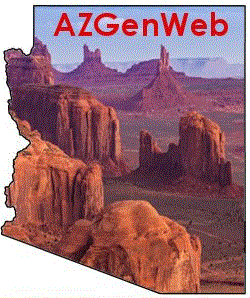1915 History of Arizona
History of Arizona, by Thomas E. Farish, published in 1915 consisted of eight volumes.
Volume 4, Page 203
For several years the Territory of Arizona and the State of California carried on a dispute as to which one the land upon which the city of Yuma was located belonged. In a preceding volume an account of the location of a survey of the town is given, and it will be remembered that this survey was filed in the proper Government office at San Diego, California. This led to the dispute as to whether the Territory of Arizona or the State of California owned this particular piece of land. Bancroft, in his History of Arizona & New Mexico, speaking of the matter, says: "It had doubtless been the original intention that the Colorado River should be the boundary between Arizona and Calilfornia, but owing to a peculiar bend of the river, the lines as correctly surveyed from the Gila junction towards San Diego, left a small area south and west of the Colorado opposite Fort Yuma, technically in California. On this area was a considerable amount of desirable property, including the Ferry Buildings."
"The Arizoan Legislature indiscreetly asked Congress for the land in 1864-65; California took the hint; the property was desired by both Yuma and San Diego counties, and a spirited controversy was carried on from about 1867, each claimant ridiculing the other's absurd pretesnions. In 1871 there seems to have been some kind of a decision at Washington in favor of Arizona, and after 1873 I find no trace of the dispute."
Volume 4, Page 277
About the year 1862 King S. Woolsey and George Martin bought the Agua Caliente ranch from a man by the name of Jacobson and his partner, for eighteen hundred dollars in gold. Around the springs, for some distance, was a kind of cienega, an oasis in the desert, where the grass grew green and fresh, and it was a favorite camping place for teamsters en route to Tucson and other points in the Territory. Woolsey and Martin wer the first to take out a ditch on private account for irrigating purposes. This ditch is still in existence, and was afterward the subject of litigation between the widow of King Woolsey, and Neahr, which litigation will be treated fully further on in this history. The biography of King Woolsey has been given in a previous volume, and from members of his family and others I have been able to secure the following in regard to Mr. Martin:
George Martin was one of the earliest settlers of the Territory and identified to a great extent with its subsequent history. He was born in Loughrea, County Galway, Ireland, on teh 4th of July, 1832, and received his education in his native land at the Jesuit schools and through private tuition. He came to America in 1851, and enlisted in the Second United States Infantry in New York, coming to California the following year. He remained in the army until 1856, his knowledge of drugs gaining him the position of hospital steward. After his discharge from the army in 1856, Mr. Martin located in Yuma, assuming control of the sutler's store at that place, which position he held until 1859. When the placer mines were discoverd at Gila City, he opened a general merchandise store, taking advantage of the need for supplies. After the war between the states broke out he went into partnership with King S. Woolsey on the Agua Caliente ranch, and at the end of three yars disposed of his interest in the ranch to Woolsey. He then entered the employ of Hooper & Company at Yuma, having charge of their store there until 1872, when he established a drug business in Yuma, which he transferred to Tucson in January, 1884. He was a resident of that city until the time of his death. He was prominent in local affairs, serving as county supervisor and county treasurer of Yuma County, and also as city treasurer and member of the city council of Yuma.
While a resident of Yuma Mr. Martin married Miss Delfina Redondo, a daughter of Stevan Redondo, one of the leading men of Sonora, Mexico, and a member of an old Spanish family. To Mr. and Mrs. Martin were born eight children; one of them, Andrew, served in the Upper House of the second State Legislature of Arizona.
Mr. Martin died in Los Angeles, California, March 30th, 1907, and is buried in Tucson.



